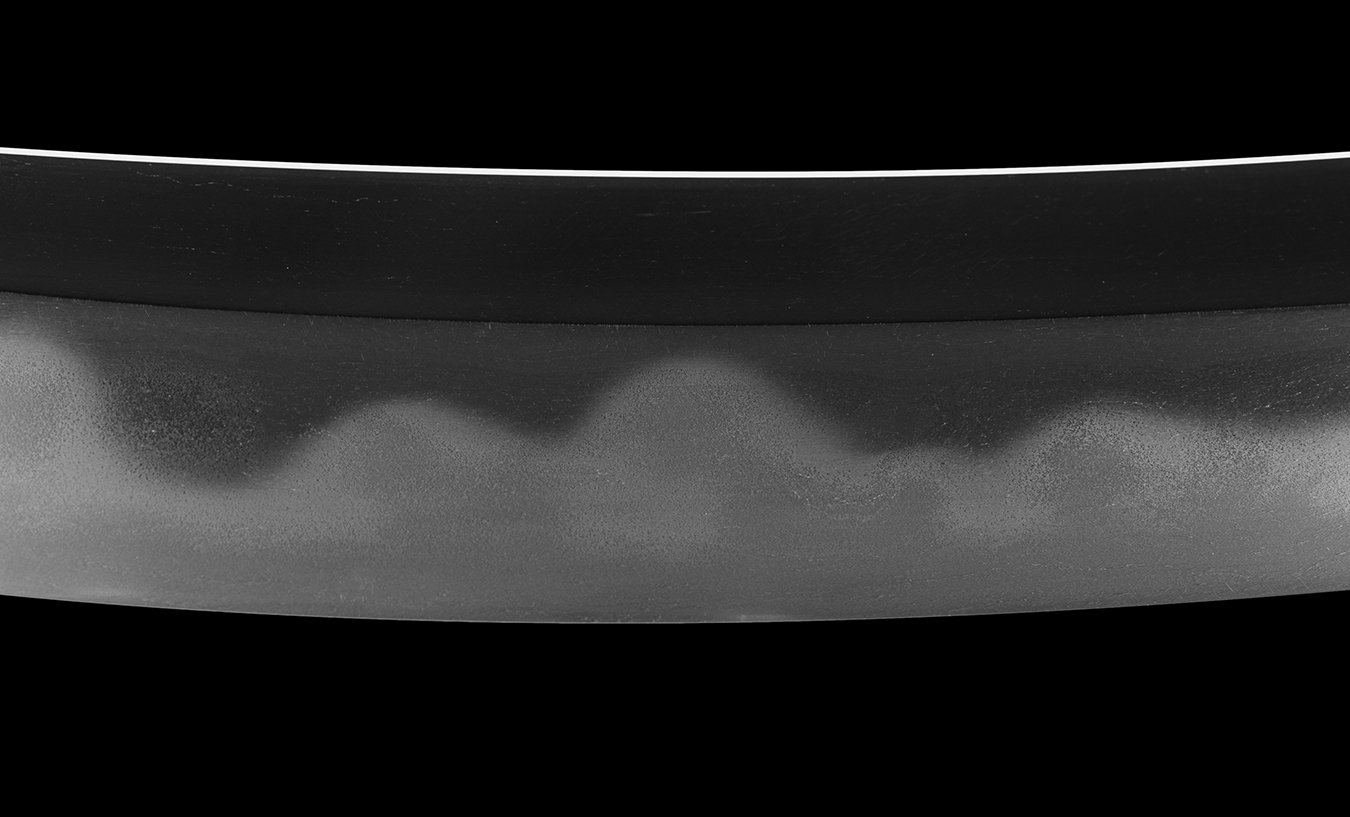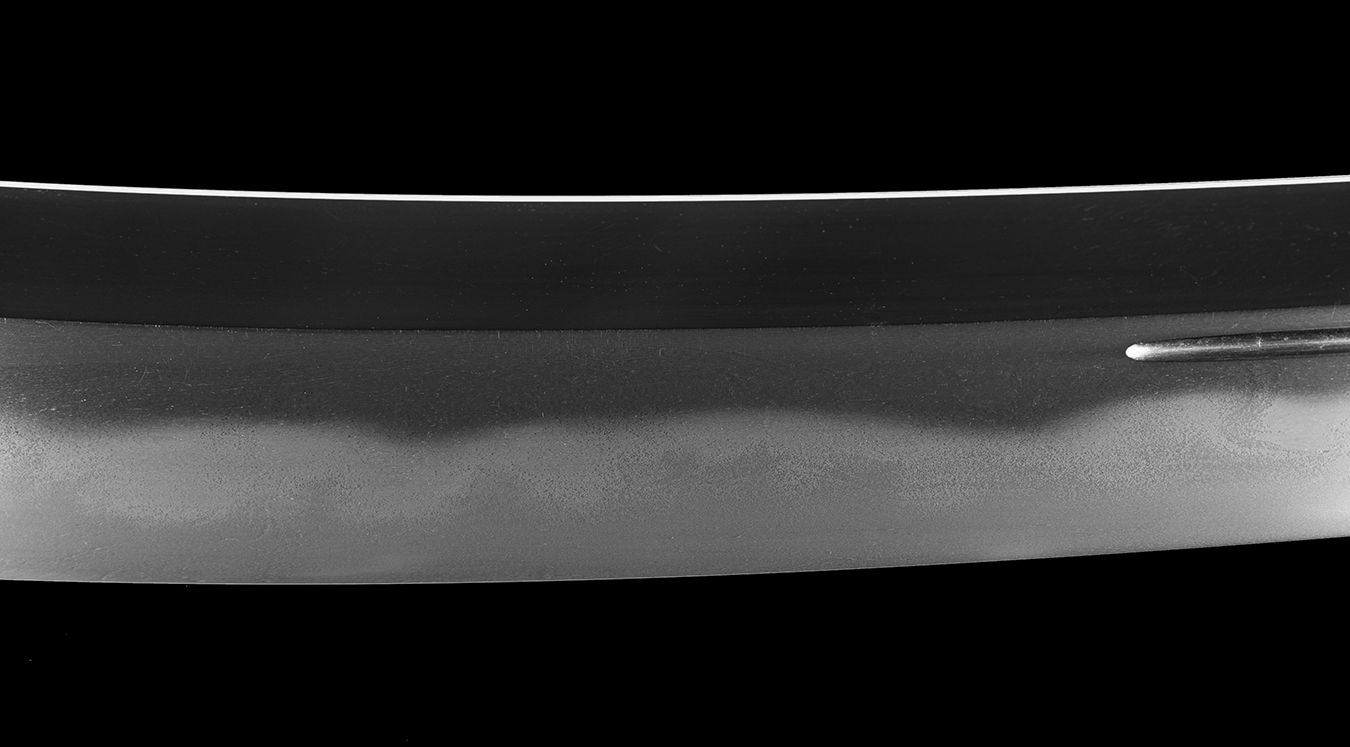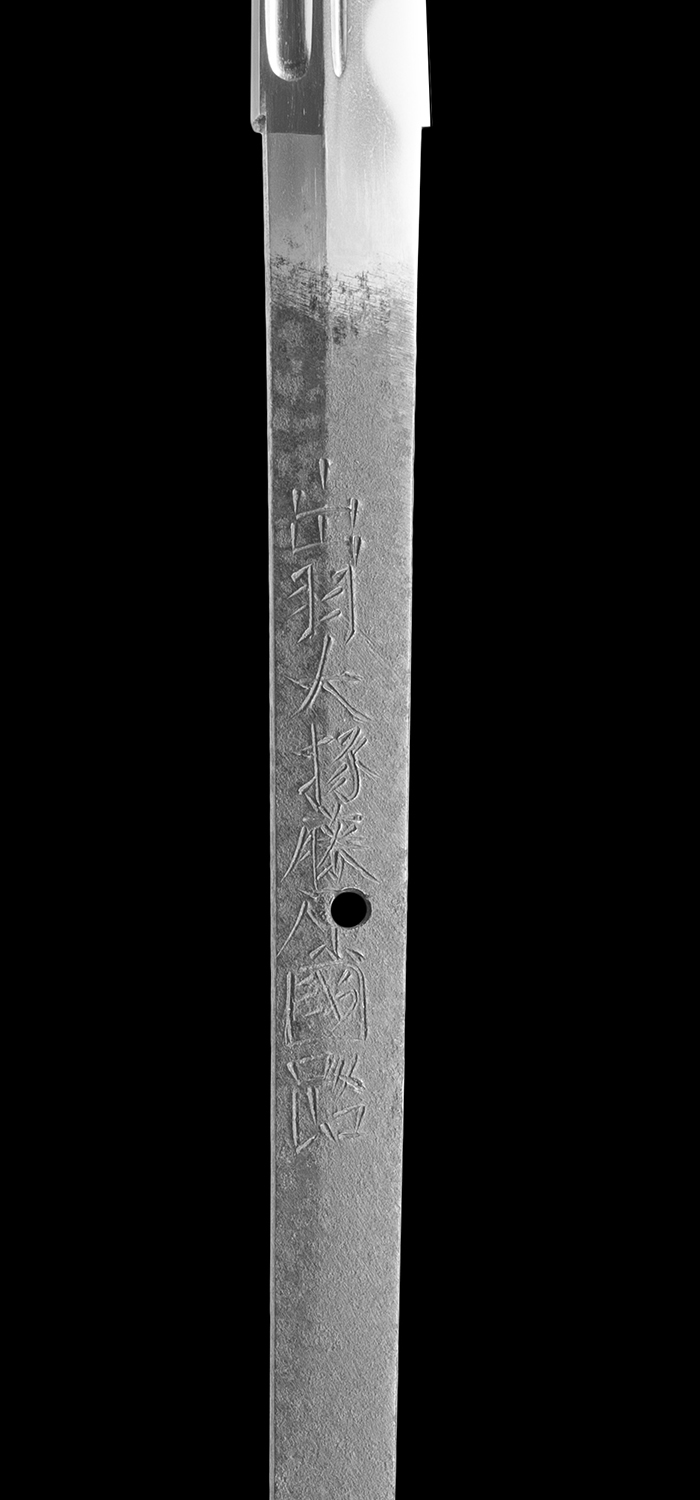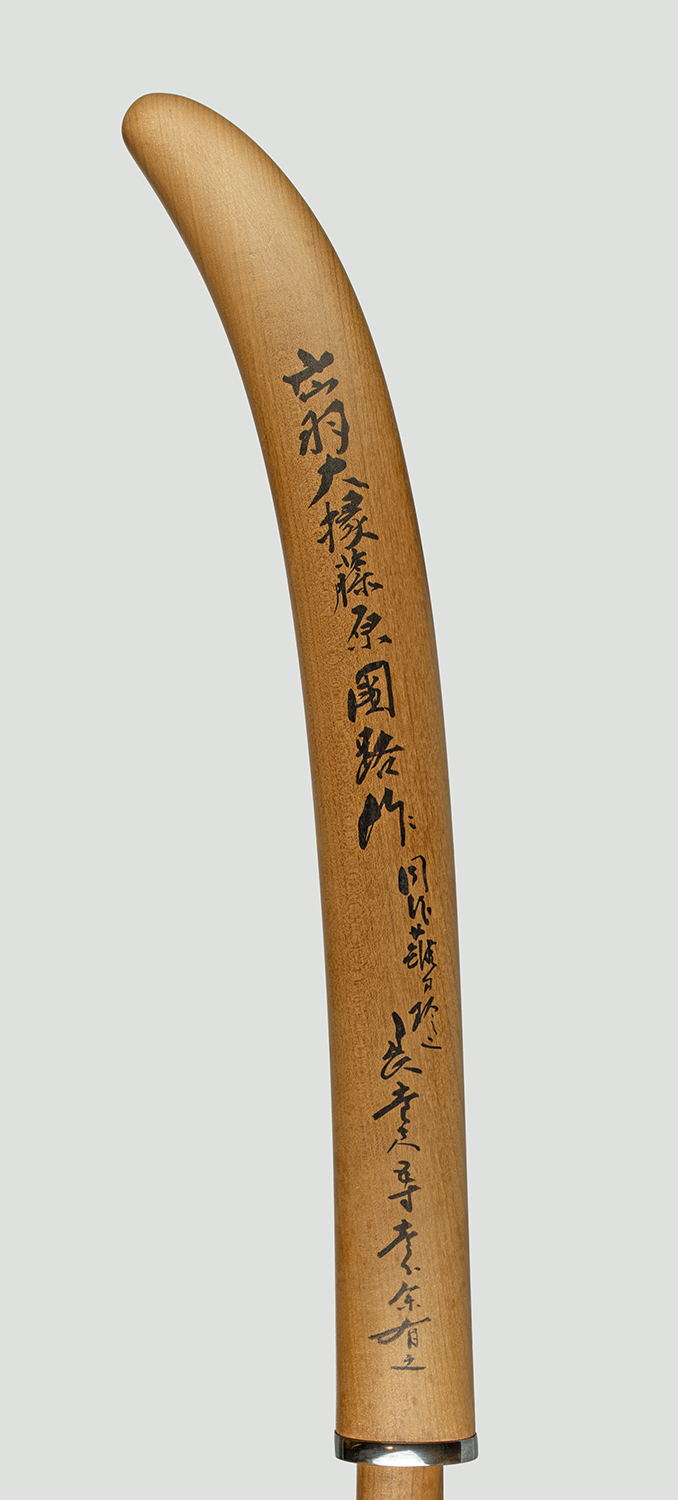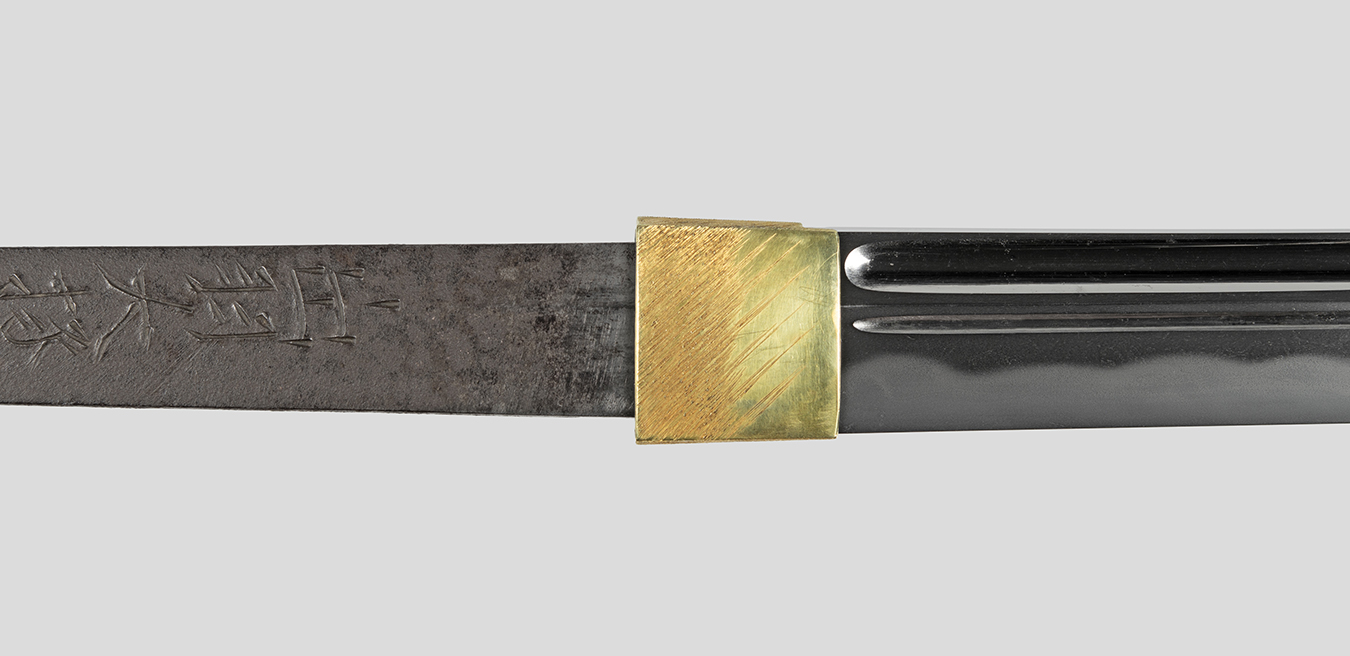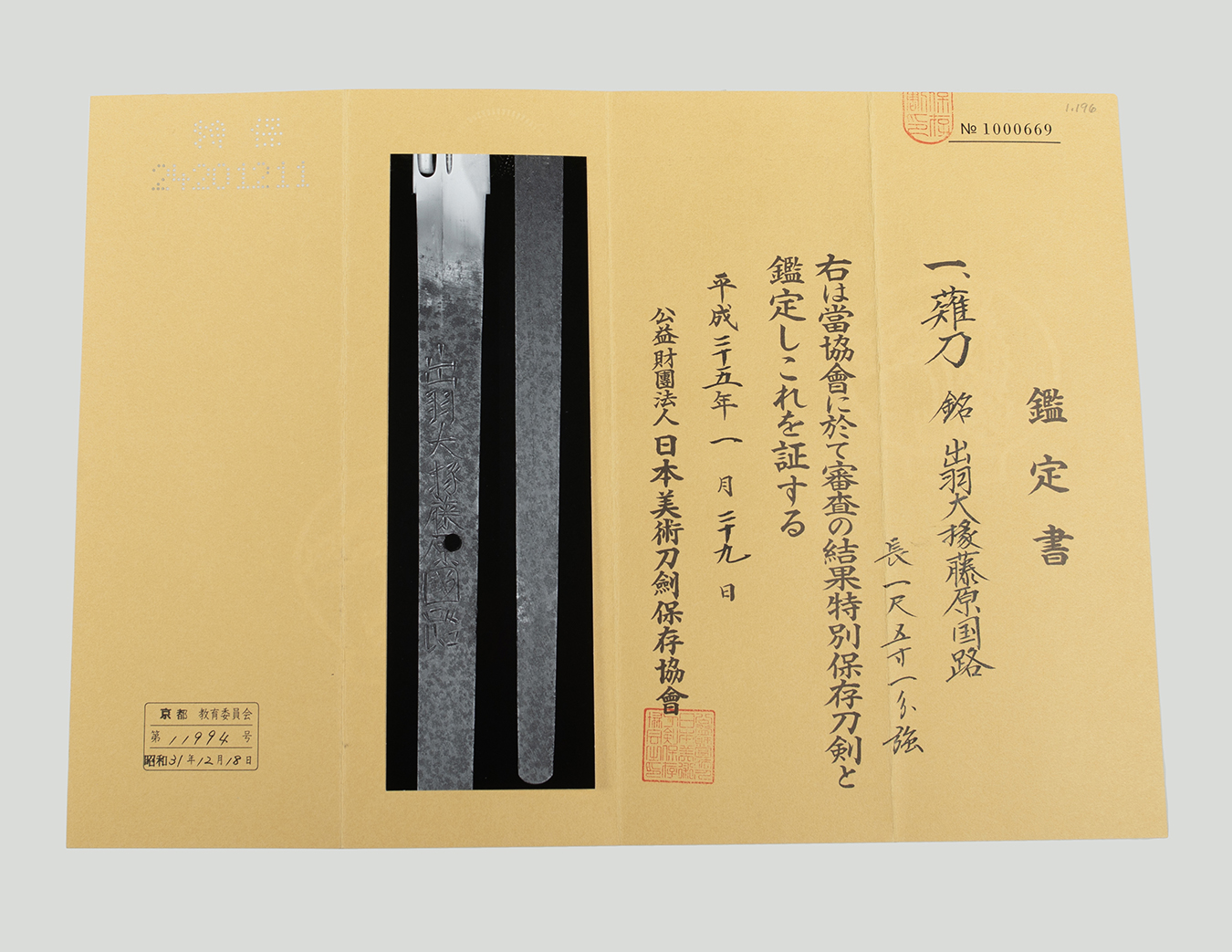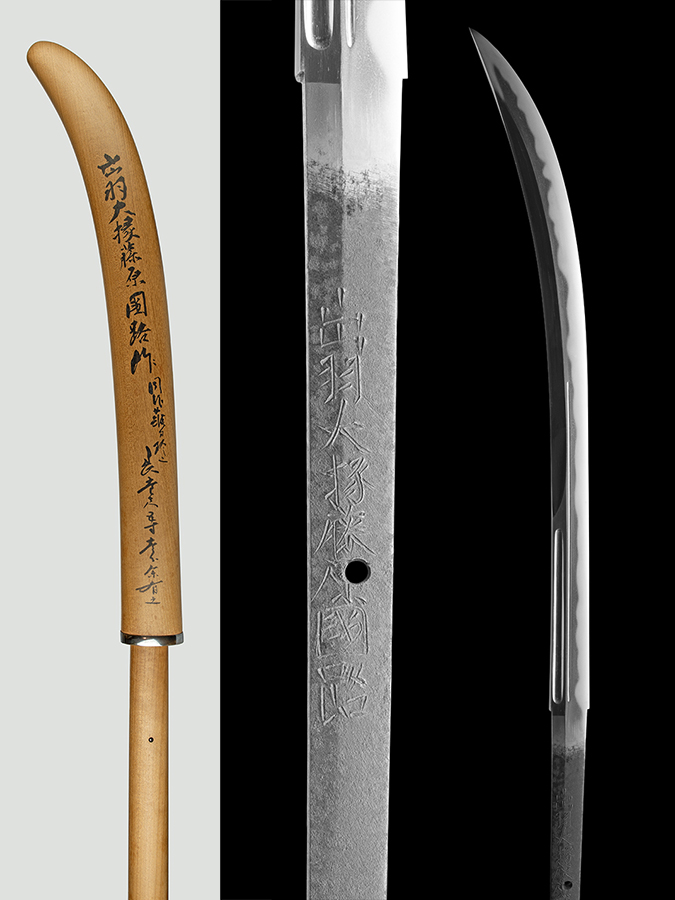|
| |||||||||||||||||||||||||||||||||||||||
Hamon : The ko-nie deki gunome midare with some choji mixed in, becoming wide in the monouchi. Kinsuji and inazuma can be seen. There are ashi in the gunome valleys. The nioi-guchi is vivid, thick and bright on both sides.
Kitae : Ko-mokume with ji-nie and chikei. Yubashiri and tobiyaki are present.
Boshi : Togari with a long kaeri on both sides.
About this sword : Dewa Daijo Kunimichi was a smith of the Horikawa school and active in the early Edo period. Initially, he studied under Iga no Kami Kinmichi and later became a pupil of Horikawa Kunihiro. There is a blade by Kunimichi, made in 1653, that records his age as 77. Thus, his year of birth occurred in 1576. In his early mei, he used 道 for "michi". He began to use 路 for "michi" in 1609. Blades with his title of Dewa Daijo start around 1615. His year of passing is unknown but there is a work produced in 1657 that states his age of 82 at that time. As we can see, he had a long active period. This was a time in which the imminent threat of war was strongly lingering from the previous era. There was "martial urgency" but without the need to mass produce weapons for large ongoing battles. Such an environment was ideal for the production of carefully made swords and the honing of one's craft as we see in this work by Kunimichi.
This nagainata was once in the Hayashibara museum collection in Okayama. It was de-acquisitioned due to the financial struggles of the museum years ago. Adding to this blade's province, it was published in the major book "Horikawa Kunihiro and his Students" by Ise Torahiko. The author was considered to be the foremost expert on the Kunihiro school in Japan. He praised this work as an excellent naginata. Based on his study of the blade, he dated it to around Keian 3 or 4 (1650 or 1651). In other words, when Kunimichi was 75 or 76 years of age. He stated that this was daimei, but not daisaku. Ise Torahiko also stated that the "sori is deep but the hira of the saki is well proportioned, and there is no drooping of the saki, and it is a good form. It shows skill in the mixing of gunome and choji".
This naginata is healthy and of excellent workmanship. It conveys a powerful feeling in one's hands. The nioi-guchi is consistent and very bright throughout the length of the blade. The nioi-guchi in the turn-back of the boshi is strong and clear. The jigane is well made. Highly controlled nie hataraki appear on the surface and the horimono is crisp and exact. This sword is in excellent old polish and there are no kizu.
This Kunimichi naginata has a saya-gaki br Dr. Kanzan Sato. The shira-saya is a fine one with sliver koiguchi and horn jiri. There is a gold foil habaki and a sword bag. Also accompanied by a NBTHK Tokubetsu Hozon paper issued in 2012. A marvelous work representing the Horikawa tradition by one of the most highly regarded makers of the early shinto period.
HOLD






